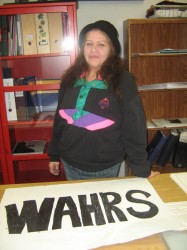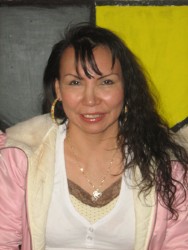Article Origin
Volume
Issue
Year
The rate of fatal drug overdose among First Nations people, especially women, in British Columbia is two to three times higher than that of the province’s non-Aboriginal population, according to a recent report released by the BC Centre for Excellence in HIV/AIDS in Vancouver.
The report, released in January and published in the journal Addiction, found that while Aboriginal people make up four per cent of B.C.’s population, they accounted for 12 per cent of the province’s illicit drug overdose deaths between 2001 and 2005.
Findings collected through provincial coroner files determined that out of the 900 overdose fatalities documented, 104 were identified as Aboriginal.
“I think it’s really concerning. Too many of these deaths involve people of First Nations ancestry,” said Dr. Thomas Kerr, co-author of the study and co-director of the centre’s Urban Health Research Initiative. “This is just reflective of the issues we see in First Nations communities,” he explained.
Kerr said drug overdoses and high rates of HIV infection are common in some First Nations communities, due to issues of poverty, substandard access to housing and education and a legacy of residential school abuse.
“As long as the government fails to take action and work with Aboriginal communities to provide better access to employment and housing, effectively we are going to continue to see these effects,” he said.
The report also states that Aboriginal women represented the most number of fatal overdose cases during the study.
“That is a finding we don’t quite understand,” Kerr said of the high number of women dying.
“Aboriginal women in [Vancouver’s] Downtown Eastside face many, many challenges, which include sex-trade work, which with it faces the disintegration of family support and community support” he said of the reasons why many Aboriginal women turn to drug use.
“They [women] are in the back alleys shooting up,” added Lorna Bird, president of the Western Aboriginal Harm Reduction Society [WAHRS], and a volunteer with Vancouver Network of Drug Users [VANDU].
Bird explained that some women have smaller veins and are more likely to need assistance injecting their drugs. But she claims safe injection facilities won’t allow assisted injections, leaving some women to do their drugs on the street and in alleys where they have no medical supervision and are consequently more susceptible to being beaten, robbed and having a fatal drug overdose.
Bird, a long-time drug user and proponent for the decriminalization of street drugs, said Vancouver should consider opening supervised assisted safe injections sites.
“Abstinence doesn’t work for everyone” said Bird. “That’s what Elders want, but it’s not happening so we have to show people how to use safely,” she insisted.
Mona Woodward, executive director of the Aboriginal Front Door Society, agrees. She said supervised injection sites like Insite, located in Vancouver’s Downtown Eastside, are crucial for lowering the city’s overdose fatality rates, but she said a safe injection facility designated specifically for women is also needed.
Woodward suspects that Aboriginal women are often more likely to use drugs in the street rather than a medically-supervised clinic out of fear that if identified as a drug addict their children will be apprehended by the ministry.
Woodward’s voice lowers when asked what could be done to decrease the overdose death rate of Aboriginal women in B.C.
“I wish there was a simple answer,” she said. “Unfortunately, the issue is multi-layered and there are a lot of complexities when it comes to [issues facing] Aboriginal women.”
“The rates of high overdose deaths in Aboriginal people are due to social and economic factors that are derived from colonization, the impact of residential schools and having experienced the loss of their children through the ministry,” she explained. “These factors increase the use of substance [by First Nations people] to mask the pain,” she said.
“We need to have community consultation on the ground level with grassroots organizations in the Downtown Eastside,” Woodward suggested.
“The Aboriginal community has to be central in taking action on these situations and developing strategies that are going to work,” agreed Kerr.
“I think a lot of things are failing and we’re not doing enough for these women,” he added. “It’s good that the Vancouver Police Department is taking action on pimps and sex-trade predators, but it’s not enough.”
Kerr calls the findings of the report “very, very disturbing,” and in light of the data, he urged the government and First Nations communities across the province to work together to find solutions that will put an end to this tragic trend.
“These are real deaths,” he said. “It’s a really hard reality and something needs to be done.”
Photos: Shauna Lewis
Photo Captions: Top - Lorna Bird, president of the Western Aborignal Harm Reduction Society and member of Vancouver Network of Drug Users [VANDU].
Bottom - Mona Woodward is the executive director of the Aboriginal Front Door Society.
- 3001 views


